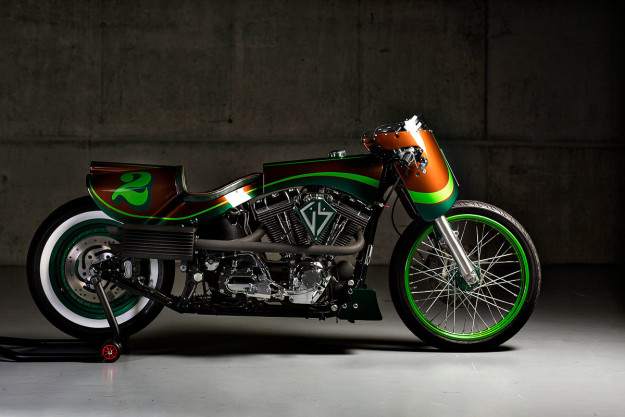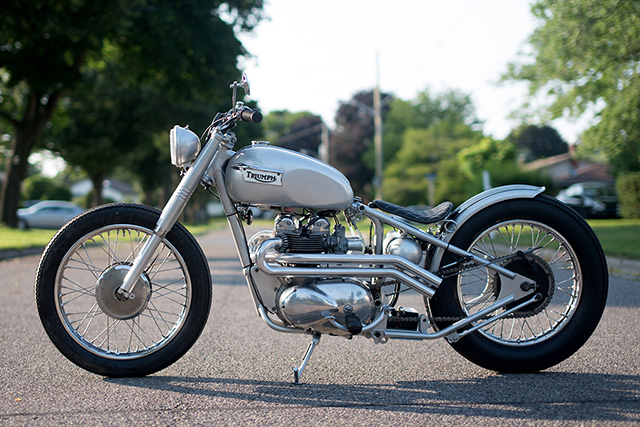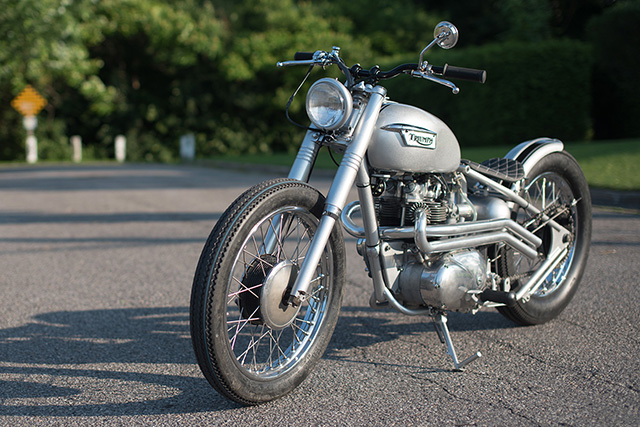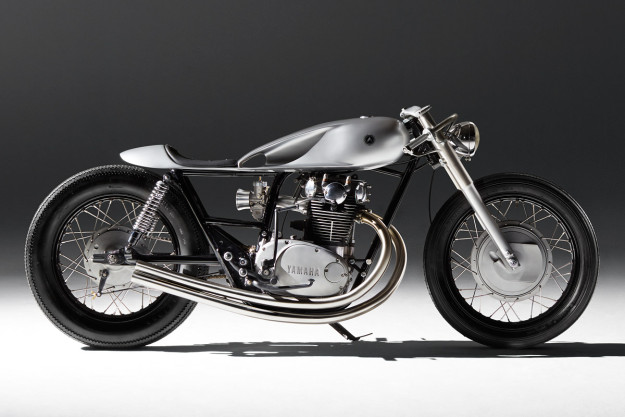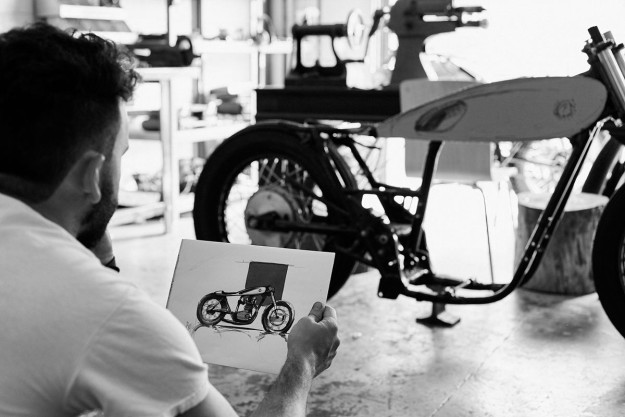In 2012 Scott Halbleid left his career as a graphic designer to focus
his efforts on building custom motorcycles. As a trained,
multidisciplinary artist his skills already included sculptural and
fabrication techniques which when combined with a lifelong love of
motorcycles had him positioned perfectly for the transition. Since he
opened the doors of his 'H Garage' workshop he has amassed an impressive
portfolio of custom builds, but this '78 Honda Goldwing, his latest
creation, is the icing on the H Garage cake.

Scott acquired the Gold Wing when an acquaintance stumbled across it
decaying in a barn and offered it up for sale. He had already been
tempted by another Gold Wing he'd seen at a swap meet months before so
convincing himself to lay down the cash was an easy task. After taking
ownership of the ageing GL1000 it was decided the bike would be his next
workshop project with an aim to transform it into a fully faired
bagger. Thankfully after some deliberation while observing the stripped
down Honda the bagger theme was ousted in favour of a Hot Rod/Mad Max
themed bike, naked, raw and packing plenty of attitude.

With the beast of a bike taking up a large chunk of real estate in
Scott's 2 bench workshop the Gold Wing build had to be prioritised and
completed as soon as possible. Over the following 6 months he
transformed the 1800cc behemoth into his minimalistic road warrior named
No. 5 to commemorate his fifth H Garage workshop build.

After the initial tear down the Gold Wing's frame and its water cooled,
flat 4 engine were cleaned and painted before being reunited once again.
Hot Rod parts manufacturer Mooneyes supplied a set of solid alloy "moon
discs" to conceal the bikes cast wheels and the stock Honda fenders
were stripped to bare metal. In the rear he trimmed the fender and
rolled it around to sit over the rubber at 5 minutes past twelve and
tucked an integrated brake/signal LED strip beneath the lip of the
fender.

With the removal of the bikes faux fuel tank (on this model Gold Wing
the real fuel tank lives under the seat) a new air filtering system was
required, so Scott once again looked to an aftermarket manufacturer in
the Hot Rod scene for a solution. Performance carburettor specialists
Holley had the perfect solution in the form of a large billet filter
that perfectly fit the top of the frame so he mounted it using a custom
made inlet system, feeding all 4 of the bikes carbs.

When it came to the bikes exhaust extra time was spent refining its
design prior to fabrication. A pair rectangular tips were underslung on
the frame to visually draw the bike lower to the ground. Shooting out
horizontally from either side of the bike the mufflers were welded to
the stock headers and produce an exhaust note that'd put most Harley
Tourers to shame. With modifications to the flow of gases through the
carbs and out of the engine some tricky tuning was required. For this
Scott enlisted the help of Chad Francis of RetroWrench who solved the
problem with careful synchronisation, jetting and a bit of needle
drilling.

The bikes factory controls were swapped out with MotoGadget switches,
new cables and hand levers mounted to a set of drag style bars. To help
keep cables to a minimum a GPS speedo with integrated tacho sits on the
backbone of the frame. The headlight has been replaced by an alloy
framed, mesh faceplate and a pair of high intensity LED Fog lights
perched atop the engine guard rails provide enough light to illuminate a
small stadium.

Suspension has been upgraded with Progressive rear shocks and rebuilt
fork internals and all of the tired old brake lines have been replaced
with braided ones. The seat pan was designed to wrap over the fuel tank
which protrudes out from the top of the bikes frame. Using several
welded sheets of steel it hugs both the frame and tank perfectly
allowing easy access to the tanks filler cap.
The final finish on the bike was achieved by applying a custom paint
colour to the face plate and the fenders before laying down a satin
clear coat which gives them the appearance of raw steel. The gas tank,
radiator surrounds and various brackets were stripped bare before being
clear coated in a heat proof clear coat while the frame, drivetrain and
forks were finished in satin black.

There are so many incredible details on this bike that I had to ask
Scott what he likes most about the No. 5 Gold Wing to which he
replied... "Riding it! It's loud, obnoxious and fast. People seem to dig
it too which is always a plus." What's your opinion?x





















